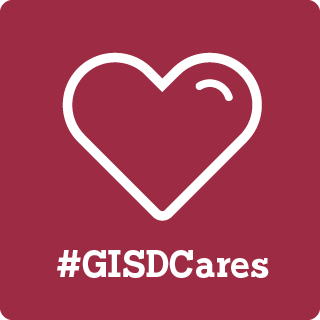


Bullying Prevention and Investigation
We take complaints of bullying very seriously. Learn how we identify, prevent and investigate bullying.
No student should be subjected to bullying or harassment that interferes with their ability to learn. No student should be subjected to safety problems that can result from bullying and harassment.
What is bullying?
Expand AllHow is bullying defined?
Bullying is defined as a single significant act or a pattern of acts by one or more students directed at another student that exploits an imbalance of power and involves engaging in written or verbal expression, expression through electronic means, or physical conduct that:
- has the effect or will have the effect of physically harming a student, damaging a student's property, or placing a student in reasonable fear of harm to the student's person or damage to the student's property;
- is so severe, persistent, or pervasive that the action or threat creates an intimidating, threatening or abusive educational environment for a student;
- materially or substantially disrupts the educational process or the orderly operation of a classroom or school; or
- infringes on the rights of the victim at school
What is cyberbullying?
The definition of bullying includes cyberbullying. This applies to:
- bullying that occurs on or is delivered to school property or to the site of a school-related activity on or off school property;
- bullying that occurs on a publicly or privately owned school bus or vehicle being used for transportation of students to or from school-related activity; and
- cyberbullying that occurs off school property or outside of a school-sponsored or school-related event, if the conduct interferes with a student's educational opportunities or substantially disrupts the operations of school, classroom, or school-related activity.
What does board policy say about bullying?
Review our district's board policies related to bullying:
Bullying prevention
Our ultimate goal as a district is to eliminate bullying in all of its forms, whether online or in-person. Help us curb the national issue of bullying by taking action as a community and discussing the importance of prevention with your family.
Tips for students on stopping bullying
Expand AllTreat everyone with respect
- Nobody should be mean to others.
- Stop and think before saying or doing something that could hurt someone.
- If you feel like being mean to someone, find something else to do. Play a game, watch TV, or talk to a friend.
- Talk to an adult you trust about how you feel. A trusted adult can help you find ways to be nicer to others.
- Keep in mind that everyone is not better or worse, but just different.
- If you think you have bullied someone in the past, apologize. Everyone feels better when you own your actions, including you.
What to do if you're bullied
- If speaking up seems too hard or not safe, walk away and stay away. Don’t fight back. Find an adult to stop the bullying on the spot.
- If you do not feel comfortable telling an adult, you can report bullying incidents through Anonymous Alerts.
Protect yourself from cyberbullying
Bullying does not always happen in person. Cyberbullying is a type of bullying that happens online or through text messages or emails. There are things you can do to protect yourself:
- Always think about what you post. You never know what someone will forward. Being kind to others online will help to keep you safe. Do not share anything that could hurt or embarrass anyone.
- Keep your password a secret from other kids. Even kids that seem like friends could give your password away or use it in ways you don’t want. Let your parents have your passwords.
- Think about who sees what you post online. Complete strangers? Friends? Friends of friends? Privacy settings let you control who sees what.
Stand up for others
When you see bullying, there are safe things you can do to make it stop:
- Talk to a parent, teacher, or another adult you trust. Adults need to know when bad things happen so they can help.
- Be kind to any kids who are being bullied. Show them that you care by trying to include them. Sit with them at lunch or on the bus, talk to them at school, or invite them to do something. Just hanging out with them will help them know they aren’t alone.
Be proud of who you are
Be kind to yourself and continue to do things that you enjoy. Do not let negative comments or actions bring you down.
Bullying investigation process
Please read through the five steps below to learn more about our bullying investigation process.

Step 1: Bullying report
The bullying investigation process is initiated as soon as a complaint or allegation of bullying is received. Teachers and staff members are required to report acts of bullying.
We encourage students, parents or guardians to report acts of bullying to a teacher, counselor or campus administrator either in person, by using the incident report form below or via Anonymous Alerts®. This tool allows you to report urgent student concerns quickly and anonymously to school officials via the webform or web app.
Anonymous Alerts® is monitored by GISD Security 24-hours daily and should only be used for serious and urgent matters. In the event of an emergency or life-threatening event, it is always imperative to call 911.
To place a report from a mobile device, first download the free Anonymous Alerts® app from the Apple App Store or Google Play store. Then open the app and enter activation code garlandisd.
Step 2: Investigation by school administration
The school administration is notified of the bullying complaint. The complaint is entered and the parents of the alleged victim and perpetrator are notified. The administrator begins investigating the events.
The target, perpetrator and witness (if applicable) are interviewed.
All information for the entire process will be documented.
Step 3: Bullying determination
Administration will review information and determine if the bullying claim is valid.
Keep in mind that even if a behavior was not considered to rise to the level of bullying, it may still require intervention and discipline.
Step 4: Notification of findings
Parents of all students involved will be informed of the incident and whether the complaint was determined to be bullying or not.
A safety plan may be reviewed.
Step 5: Consequences assigned
Consequences will be assigned as outlined in the Student Code of Conduct. Targets of bullying will not be punished.
Rights to appeal are explained to all parties.
Retaliation against students who report bullying will not be tolerated.
Report forms
Incident Report Form - English (PDF)
Incident Report Form - Spanish (PDF)
Resources
David's Legacy Foundation - non-profit dedicated to ending cyber-assisted bullying










